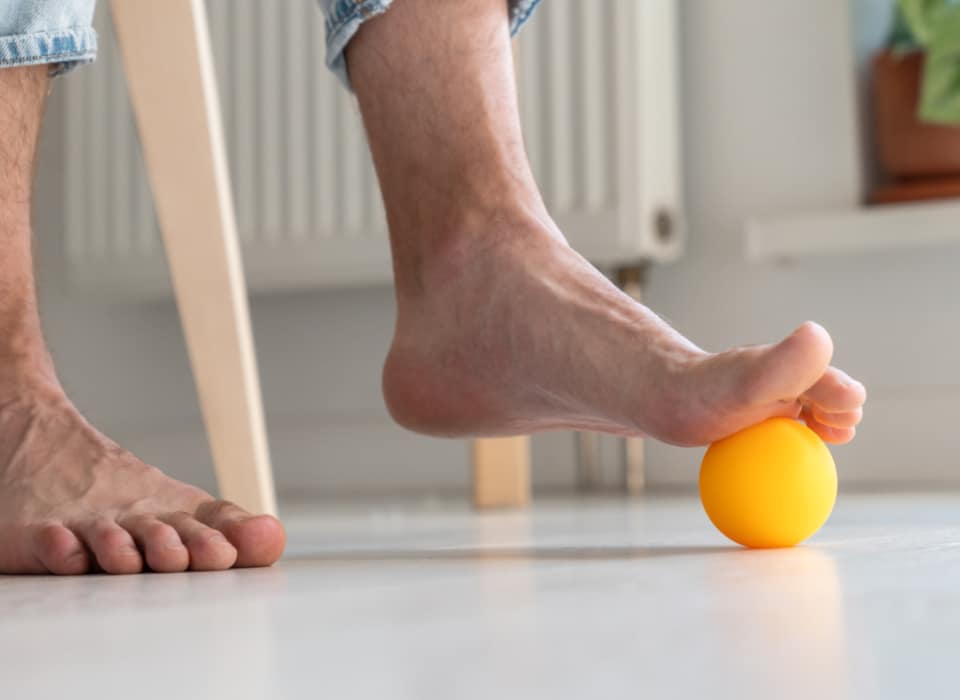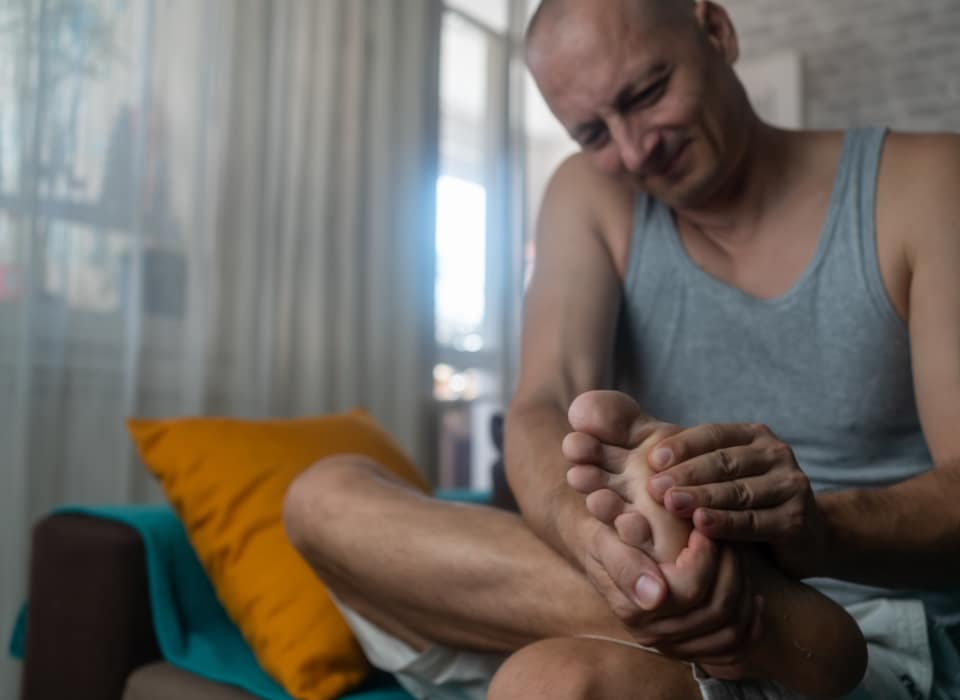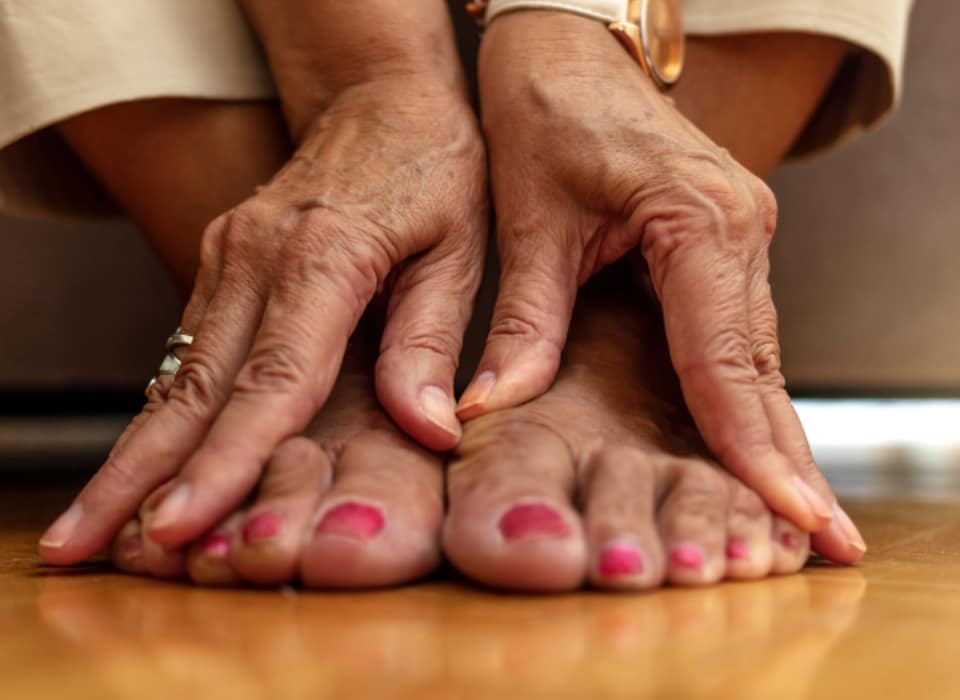Arthritis in foot Perth
What is foot arthritis?
Your feet bear the weight of your entire body. Just like a building needs a solid foundation, your body relies on your feet to hold you up and help you move around. Your feet also act like shock absorbers, taking the impact so that your bones and joints don’t hurt.
If the supporting structures in your feet, like the joints and the soft tissues, are not working properly due to arthritis, your quality of life can be significantly impacted. The pain and discomfort caused by arthritis can limit your ability to stand, walk, and do the activities you enjoy.
The most important reason why people develop foot arthritis is the natural wear and tear that occurs when we get older.
The protective cartilage that covers the ends of the bones can gradually wear away. The bones then start rubbing against each other, leading to pain, inflammation and stiffness.

It’s called osteoarthritis, and it’s the most common type of arthritis that affects the feet. Osteoarthritis is a natural part of the aging process and there are ways to manage its symptoms and improve your quality of life.
There are other types of foot arthritis the commoner ones being:
- Inflammatory arthritis: This is due to autoimmune disease where the immune system attacks the joints, causing pain, inflammation and potential deformities in your feet.
- Post-traumatic foot arthritis: This can happen after a foot injury or trauma. The damage to the joint surfaces can lead to gradual joint deterioration.
Foot arthritis symptoms
Whether your arthritis is caused by trauma, wear and tear or inflammation, the symptoms of the different types of foot arthritis are similar:
- Pain
- Stiffness and swelling
- Warmth and redness around the joint
- Difficulty walking or standing
- Changes in the shape of the joint
- Gradual development of joint deformities
How is foot arthritis diagnosed?
If you’re experiencing these symptoms, we welcome you to make an appointment at The Foot & Ankle Centre here in Perth.
Before we can diagnose your condition, we may perform a variety of tests.
Clinical examination: We will examine your feet, looking for signs of swelling, tenderness, stiffness and joint deformities.
Functional assessment: We will also assess your gait; how do you walk? Are there any abnormalities in your posture? How is your pain affecting your daily activities?
Imaging tests: We will look at X-rays to visualise changes in your joint structure, such as joint space narrowing, bone spurs and any signs of arthritis in the foot. Occasionally CT and MRI scans are required.
When we diagnose foot arthritis, we will create a personalised treatment plan. We’ll take into account your individual circumstances, the severity of your arthritis and your own preferences. The goal is to address pain, improve mobility and overall enhance your quality of life.

Let’s take a further look at what treatments are available for arthritis in feet.
Arthritis in foot treatment Perth
How is foot arthritis treated?
To start, we look at non-surgical options to treat foot arthritis.
- Lifestyle changes:
- Choosing low-impact exercise like swimming, cycling or gently walking.
- Maintaining a healthy weight can alleviate stress on the foot joints and reduce pain.
- Eating a diet rich in anti-inflammatory foods such as berries, fatty fish, leafy greens and whole grains.
- Avoiding prolonged standing
- Physiotherapy: Specific exercises and therapies can enhance foot mobility, strengthen surrounding muscles, and alleviate pain.
- Orthotics: Custom-made shoe inserts can provide better support and alignment, easing strain on affected joints.
- Medications: Pain relievers and anti-inflammatory drugs can help manage discomfort and reduce inflammation.
Cortisone injections are also used to relieve swelling and pain but are not long-lasting or curative.
We consider surgery as a last resort for treating arthritis in the feet. Only if non-surgical treatments fail to give relief or your symptoms are worsening, we will look at foot surgery.

Let’s take a look at foot surgery for arthritis and what type may be best for you.
Surgery for foot arthritis Perth
Foot surgery for arthritis
Foot surgery for arthritis is a last resort. The main treatment for foot arthritis is:
Arthrodesis or fusion surgically fuses the joint so it cannot move and thus reduces or abolishes the pain. As it limits movement, this type of surgery is not for everyone.
Recovery after surgery
Joint fusion recovery
| Big operation: | yes |
| Swelling: | May persist for 6-12 months |
| Supportive boot: | Non-weight bearing is required in a supportive boot for six weeks following surgery. |
| Crutches: | Yes, graduated-weight bearing without crutches is progressed over a further three months. Most patients are independent by six months. |
Self-assessment foot arthritis
You are not alone
We welcome you to make an appointment at The Foot & Ankle Centre. We try to see patients as quickly as possible. Alternatively, The Foot & Ankle Centre has developed a short form that you can use to answer a few questions. You will receive a personal answer from Prof Dr Gerard Hardisty.



